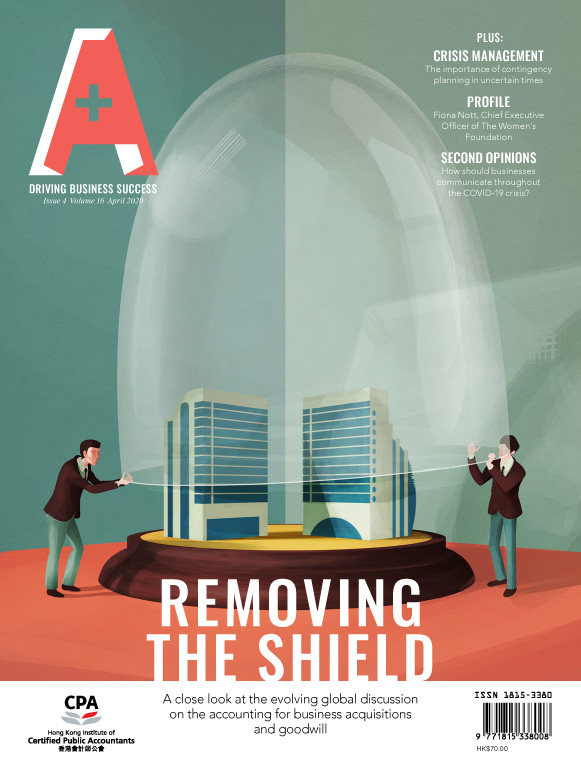The uncertainty associated with the global COVID-19 pandemic has caused unprecedented public market volatility. While business activities in Mainland China have shown recent signs of recovery, many parts of the world were still under lockdown in April. People fear there will be further waves of outbreaks, and the economic outlook remains uncertain.
Valuation professionals look at what is known and knowable as of a measurement date and apply appropriate inputs to valuation models. Yet, many inputs for valuing private investments are unobservable and inferred from market data or traded securities. In turbulent times, market volatility, government actions and rapidly changing business environments should all be considered when determining fair value.
Market conditions can impact all valuation approaches. The following is an example to illustrate considerations for calibration and adjustments in the valuation model in times of significant market uncertainty. These approaches are widely used in business valuations and are adjusted for current market conditions and market prices.
Example
Amazing Trip is a fast-growing online travel platform selling local experience tours in Mainland China. In the year to 30 June 2019, it recorded US$5 million in revenue. It forecast revenues of US$6 million for the next 12 months.
Since the outbreak of COVID-19, revenue from travel-related products have gone down by 90 percent due to travel restrictions and decreased demand for travel. The company diversified its revenue source by selling gourmet groceries on its platform. This new source of revenue has moderately offset the loss of its primary source of income from travel products. Its newly diversified business helps it weather the storm better than its peers and in the year to 31 March 2020, it recorded revenues of US$5 million. However, it only expected next 12 months revenues of US$4 million.
The company closed its last preferred financing round in June 2019. The implied equity value of the latest transaction is US$40 million. How should the previously calibrated inputs be adjusted on 31 March 2020?
Calibration of unobservable inputs
Calibration is the process of using transaction price (usually the company’s securities) as of transaction date to solve for certain unobservable inputs, which are then rolled forward and adjusted for subsequent measurement dates. Assuming the transaction price is at arm’s length, the implied company value would be considered as the fair value as of transaction date.
The transaction price and reported and expected revenues lead to an enterprise value/last 12 months (EV/LTM) revenue multiple of 8x and enterprise value/next 12 months (EV/NTM) revenue multiples of 6.67x on 30 June 2019. The calibration indicated market participants valued the company at the median of the guideline comparable companies’ EV/LTM revenue multiples at the transaction date.
The company value is re-measured subsequently on 31 March 2020. Both the economic environment and company’s prospects have changed since the transaction date, and market participants may not pay the same price as they would have before. Hence, the previous assumptions from calibration and inputs must be updated. Below are some factors (but not limited to) we can consider during this exercise:
- What are the known and knowable elements as of the re-measurement date?
- What are the impacts of COVID-19 on the company’s revenue, customers, supply chain and operations?
- What are the company’s milestone progress, performance and liquidity?
- Is there any change in the exit plan due to the pandemic?
- How insulated is the company to COVID-19 against its peers?
As Amazing Trip appears to be less susceptible to COVID-19 than its peers due to a more diversified business, higher than median multiples can be used for guideline comparable companies, say the third quartile EV/LTM revenue multiples on 31 March 2020.
Avoid double dipping of valuation inputs
The valuer should avoid considering the same set of valuation inputs twice ineffectively. In this case, NTM revenue on 31 March 2020 has been revised downward to account for the lower expectation due to the near-term impact of COVID-19. If a lower revenue or a larger discount for lack of marketability is applied, the result would appear to be punitive.
Review the result
Estimating fair value is not an exact science. Valuation from different methods do not necessarily reconcile. More than one valuation method should be used to corroborate with each other. If one approach results in a significant difference from the others, valuers should understand the differences and revisit the valuation inputs and models if necessary.
As uncertainty abounds, what is “known and knowable” as of measurement date can become less subjective or obvious. Valuation assumptions and rationales should be documented in detail.
Until a vaccine has been found and widely applied, economic uncertainties remain. However, the pandemic does not change the framework of fair value and valuation policy. Valuers need to exercise better judgement and establish a robust valuation policy to deal with the upcoming challenges in valuation.















